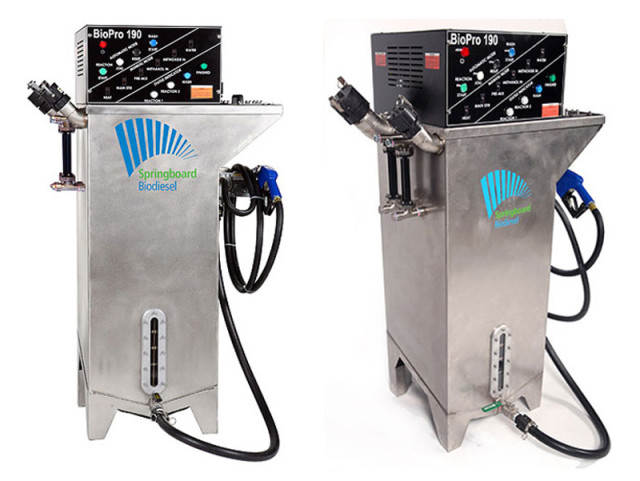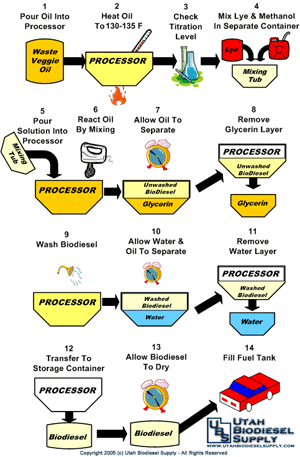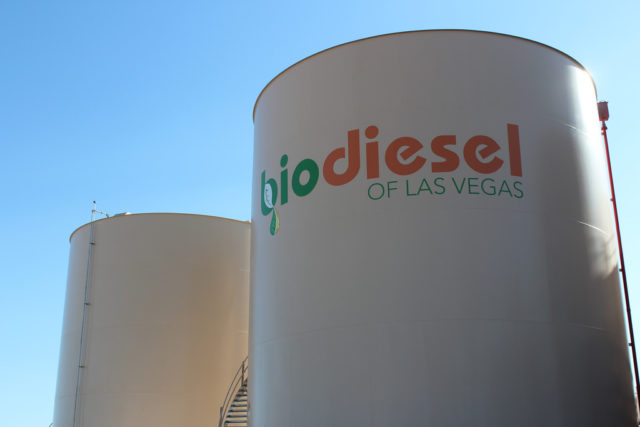I’ll never consider myself a card-carrying member of the environmentalist movement, but neither will I shut out my brain to the next big thing in terms of technological development. There are multiple sides to every argument, and where it concerns humanity and its need for energy, I’m open to considering options if they help keep nature and the economy alive.
One solution that’s always piqued my interest has been biodiesel. Until today, I’ve never really examined it too closely, but it’s one of those terms I’ve heard that gives one the “warm fuzzies” about its potential, while blissfully ignoring its downsides. My hope today is to shed that ignorance and discover what makes the technology work (or not work).
 [1]
[1]This giddy man’s face hides a sadness beneath it. Photo: biodieselkitsguide.com [2]
In terms of how biodiesel is made, its proper term is fatty-acid methyl ester, also known as FAME. It derives from vegetable oil or animal fats (biolipids), the former of which often starts as soy methyl ester (SME), or soybean oil, here in the United States (Europe uses rapeseed oil, also known as rapeseed methyl ester, also known as RME).
You may recall a small craze surrounding biodiesel back in 2005-06 when people said “gassing up” their biodiesel vehicles only required heading over to some fast food restaurant and asking the staff to donate their used-up fryer oil. Given the ubiquity of fast food establishments across the country, biodiesel seemed like the “secret” that Big Oil “doesn’t want you to know about.” The truth, however, was that biodiesel had a hidden side.
Like any other fuel, biodiesel has to go through a laborious process to become useful. Utah Biodiesel Supply [4], a company that provides kits and materials for biodiesel beginners and aficionados, showcases how this happens with a handy diagram on its homepage [4] (pictured right).
 [5]
[5]The BioPro 190 can be yours for the low, low price of $10,995. Photo: utahbiodieselsupply.com [6]
As it turns out, collecting oil to turn into biodiesel can be sketchy from the start if the oil is too high in titrates or contaminants (soap, water, degreaser, etc.). You’ll have to test it right there on-site. Provided the oil is viable, you’ll then have to filter that crap down, down, down; 74 microns is as small as UBS offers, but industrial filtration goes down as small as one micron. Also, these filters aren’t all that cheap, but they are washable and reusable.
Now that you have your filtered oil ready to go, you can hop on over to your $11,000 BioPro 190 and start dispensing the oil into the machine. Be sure to have your bags of lye (a catalyst) handy, as well as a massive, 55-gallon drum of methanol to make methoxide. WARNING! The fumes produced during this phase can kill you. Add some sulfuric acid, and wait 24 hours. You can pass the time thinking of all of the money you’ll save after a few years!
A full day later, you’ll have a layer of glycerin on the bottom and reacted biodiesel on top. The glycerin is drained out using a hose, and is then poured into receptacles for your budding glycerin collection to pass down to your children. Bring out another 55-gallon drum, this one full of clean water to “wash” the biodiesel. Going back to the BioPro 190, you’ll “reset” and “wash” the biodiesel inside using the water. Hours will pass and you’ll wonder why the police are at your door, but they can wait a little longer as the biodiesel “dries.”
With that done, your biodiesel is ready to use! For your efforts, you now have about 50 gallons of biodiesel ready to dispense out of the attached filler hose. Now you’ll just have to make sure your vehicle is prepared to handle biodiesel [8], which may require removing the DPF [9], which may get you a fat ticket if the cops ever find out, but that’s a whole other story…

